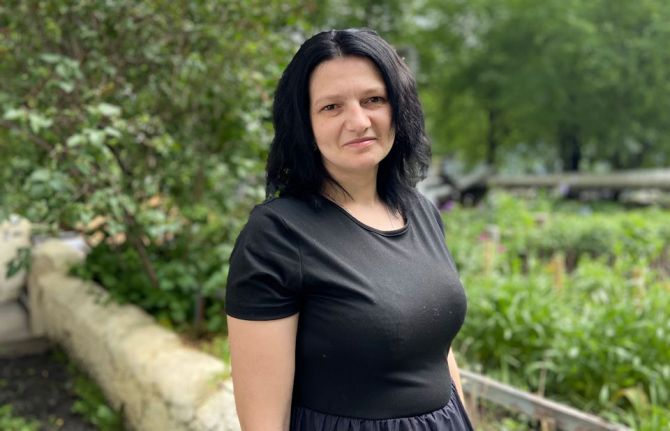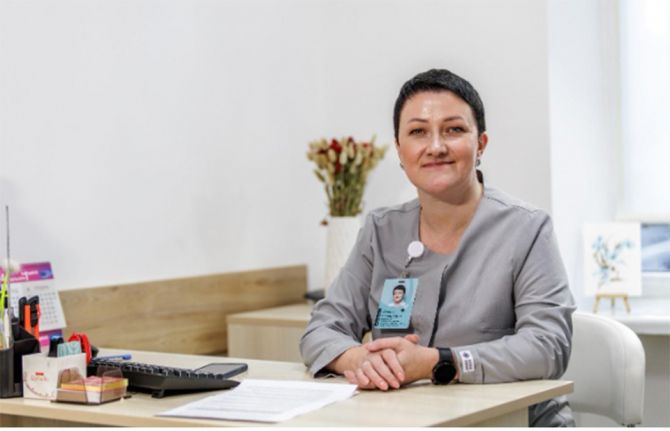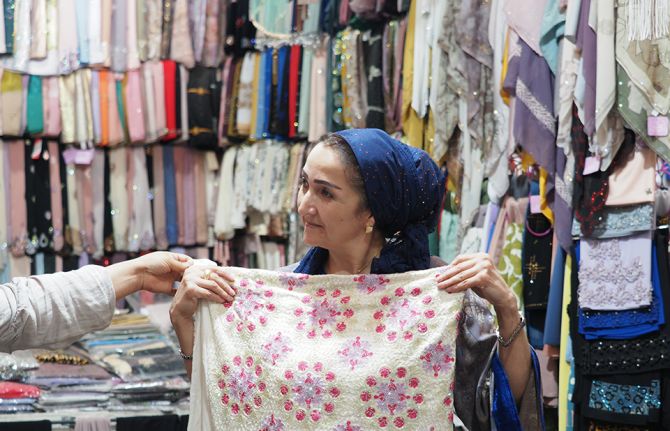
Feature Story
Harm reduction to be scaled up in Ukraine
11 April 2007
11 April 2007 11 April 2007Natalia, a young Ukrainian woman, has been injecting drugs for the last five years. Injecting drug use is a serious problem in Ukraine and is further compounded by high HIV prevalence among people who inject drugs. In Kiev for example the Ukrainian Ministry of Health estimated that in 2006, 49% of people who were injecting drugs in the capital were also infected with HIV.
However, Natalia is one of the luckier ones. She is one of the 110,000 people who accessed harm reduction services in Ukraine in 2006 and has enrolled in a programme of substitution therapy which is helping her to regain a normal life.
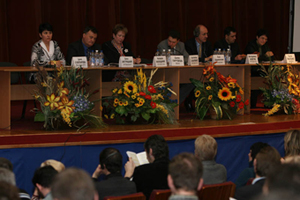
Participants at the 2nd National Conference on Harm Reduction
that took place in Kiev between 21 and 24 March 2007
Natalia was also one of the guest speakers at the 2 nd National Conference on Harm Reduction that took place in Kiev between 21 and 24 March 2007. She addressed an audience of almost 400 participants speaking about her experiences and about the importance of harm reduction programmes in Ukraine. Among her audience were the different stakeholders in Ukraine’s response to AIDS, from government officials to health and social care practitioners, communities of injecting drug users, law enforcement agencies, correctional institutions, and the media. In her speech she said, “With the help of a substitution therapy programme I am now able to live normal life again. It has been six months since my programme started and I am already back home, I contribute to raising my niece and I have a job that I love. None of this would have happened if harm reduction programmes did not work in this country”.
Natalia’s story is a familiar one in Ukraine and highlights the importance of harm reduction programmes in countries which are faced with HIV epidemics that are predominantly fuelled by unsafe injecting drug use. The statistics speak for themselves––while, according to official reports, the proportion of people in Ukraine who inject drugs among all new cases of HIV has decreased (from 60% in 2001 to around 45% in the first half of 2006), there is no evidence that the epidemic among people who inject drugs is declining. Sentinel surveillance conducted in several regions in 2006 showed that the prevalence of HIV infection among injecting drug users ranged from 10% in the city of Sumy to over 66% in the city of Mykolayiv.

Dialog between AIDS workers and the media facilitated by TV
star Savik Shuster. Photo credit: International HIV/AIDS Alliance
(Ukraine) / N. Kravchuk
“We know that the HIV epidemic can only be reversed if people who inject drugs have access to a comprehensive set of harm reduction interventions, including information, access to sterile injecting equipment, condoms, drug substitution treatment, and HIV treatment, care and support. In countries and cities where harm reduction programmes have been implemented early and on a large scale, HIV prevention programmes have been successful in reducing HIV prevalence among people who inject drugs––down to less than 5% in some cases. This is why harm reduction is officially supported by the UN system,” said Mr. Paul Bermingham, World Bank Country Director for Ukraine, Moldova and Belarus, and Chair of the UN Theme Group on HIV/AIDS in Ukraine.
During the conference both groups working on the ground and high level governmental officials also stressed the importance of harm reduction interventions, including drug substitution therapy, for an effective national AIDS response in Ukraine. The Head of the Ukrainian AIDS Centre, Professor Alla Shcherbynska said, “ Ukraine has decided to scale up harm reduction programmes with the aim of moving towards universal access to HIV prevention, treatment, care and support by 2010. That has now become our national goal. How quickly we reach this goal will depend upon how efficiently we scale up and improve the quality of harm reduction services, including drug substitution therapy.”
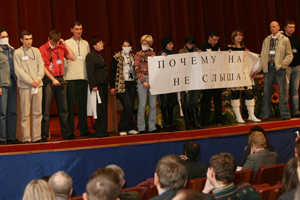
Activists representing communities of people who inject drugs
seized the stage and expressed their frustration for being
sidelined by society and discriminated against.
During the conference activists representing communities of people who inject drugs who seized the stage and expressed their frustration for being sidelined by society and discriminated against. They asked, “Why don’t they hear us? We are not a problem; we are part of the solution”.
Participants also discussed and promoted strategies for better involvement of communities of people who inject drugs and local governmental entities in harm reduction programmes and decision making. Participants praised the successes of pilot projects implementing drug substitution therapy and discussed ways to scale-up programmes across the country.
“We must begin to integrate planning and action for the future into the response as from today,” said Dr. Ani Shakarishvili, UNAIDS Country Coordinator in Ukraine. “First and foremost, we need to find ways to ensure that AIDS, harm reduction and drug substitution therapy, gender issues, reduction of vulnerability, stigma and discrimination towards people who inject drugs, people living with HIV and others remain a top political priority in Ukraine, year in and year out, and this conference is a big step towards achieving that.”
At the close of the conference, the community of people who inject drugs presented a joint statement on behalf of all the participants addressed to the Government of Ukraine, donor communities, and civil society calling for key actions and decisions.
The day after conference the State Department of Ukraine on Enforcement of Sentences issued a decree establishing a working group tasked with implementing an action plan on harm reduction measures in Ukrainian prisons. Providing needle and syringe exchange services in penal institutions is likely to be one important, tangible and immediate outcome of the conference.
Links:
More information on Ukraine
UNAIDS Best Practice Collection: HIV Prevention among Injecting Drug Users in Traditional and Developing Countries (pdf, 1,53 Mb)

